Women-Empowerment in India – A Brief Outlook
- Women-Empowerment in India – A Brief Outlook
- Who started women empowerment in India?
- What are the 5 types of women empowerment?
- Factors Affecting Women’s Empowerment in India
- 1. Malika Handa
- 2. Mallika Dutt
- 3. Nirmal Chandel
- 4. Asha Kandara
- 5. Bala Devi
- 6. Seema Rao
- 7. Ritu Karidhal
- 8. Harpreet Chandi
- 9. Arunima Sinha
- 10. Nisha Grewal
“To all the little girls who are watching this, never doubt that you are valuable and powerful, and deserving of every chance and opportunity in the world to pursue and achieve your own dreams.” –
Hillary Clinton
The term Women-Empowerment is all about authority. It is a power that embellishes women to take the lead and have the right to fulfill their wishes. It is a term that refers to the liberation of women from social-economic restraints.
Women in India comprise 50% of the population. The bulk of them stays economically dependent on each other without employment. Women in India are the essence of grit, determination, and effort.
For years, women have suffered the injustice and prejudice of society. But today, with the changing times, they have made a name for themselves. They have broken the shackles of gender stereotypes and stood to achieve their dreams and goals. Just like Ritu Saini – The Story Of A Courageous Woman And An Acid Attack Survivor
Women across the globe have astounded responsibilities on them, and they deliver them without any fault. Women in India deliver multiple roles effortlessly every day. Women are considered the backbone of society. Living in male-dominated societies, Indian women play the role of a caring mother, loving daughter, entrepreneur, and role model for all as she starts something different.
There is no doubt that in a society like India, women have avoided the pleasure to do something for themselves and prove their worth by contributing to different sections of the community.
For years, they have struggled, fought, and emerged as successful role models. Women-Empowerment in India is the most effective tool for development these days.
Who started women empowerment in India?
In the form of “Savitribai Phule,” India’s first female educator arrived in the year 1848 AD. Savitribai Phule broke the social taboo that a woman cannot be educated, which has contributed to the rise of women’s empowerment in India this year.
What are the 5 types of women empowerment?
| Types of women’s empowerment |
| Social Empowerment |
| Educational Empowerment |
| Economic Empowerment |
| Political Empowerment |
| Psychological Empowerment |
Factors Affecting Women’s Empowerment in India
Women-Empowerment in India is heavily dependent on several tools and numerous variables ranging from the geographical setting (urban/rural), social status (caste/class), educational status, and age factor.
Women have to fight and pave their path to set us an example, empowering us all. Over the years, not majorly but, significantly there has been a rise in women entrepreneurs, success stories of women have churned up the corner making young girls dream. We have seen the rise of women athletes bringing medals and appreciation making, the country proud paving the way for Women-Empowerment in India.
Change seems formidable and inevitable, but when it knocks on your door, it breaks the path of stereotypes and surpasses the prejudice and taunts of society. In the current frame of existence, Indian women are right in the middle, caught between two storms of patriarchal conservatism and the other self-acceptance and freedom.
There are two opposing schools of thought going on in the minds of a woman. Luckily, women across India are standing up for themselves. They are embracing themselves. They are winning their dreams, and bringing a change in society through their vision and actions. They are the true epitome of strong, graceful, and powerful women, empowering each woman at one time. Challengers like Darshana Dayat an inspiration and epitome of women-empowerment have moved us ever since.
The saying is that a woman cannot fathom what a man does. They cannot achieve the impossible. Gone are the days! Today, Indian women have embarked their names in every field, from business, sports, art and entertainment, science and technology, and whatnot!
They have not achieved their dreams but have attributed their journey to millions of dreams of many aspiring women. They have confidently and empathically stood as an inspiration for many young minds who wish to do something in their life.
After centuries of injustice, social prejudices, gender stereotypes, and tons of stigma, a woman can be her true self. If a woman wants to be independent, and earn, no sense of abstraction can stop her from achieving this individuality.
Well, it cannot be said all have achieved. There is still growth to be made, and a lot to acquire and prove. Women in India are pioneer minds building a bridge to gap the stereotypes and be whatever they want.
When we listen to the term Women-empowerment in India, the first thing that comes to mind is the overhyped virtual campaign that claims to work for women-empowerment at all levels.
Well, these campaigns don’t just brush off. These are the notions that educate about women-empowerment to stand up for themselves.
- It should be understood that a single mother raising her child is a women-empowerment.
- A woman supporting her family is an women-empowerment.
- A daily wage woman earning for the livelihood of her family is an women-empowerment.
- A woman leading a business in a top industry is an women-empowerment.
Over the years, beginning from the struggle for freedom, Indian women have played an influential role. Till today, many women are a symbol of courage and heroism. They have engraved the paths of many Indian women to achieve their goals and fulfill their dreams.
There is a great need for women-empowerment in India at micro and mini levels to make India a country where women can stand head to head with men.
There is a lot to achieve, but the thought of knowing that it is still possible to fight for women-empowerment in India has made a powerful impact on how women view themselves.
India is a powerful country. It is a land of diversified creativity. It is a land that has benefitted the world by giving them prestigious leaders and noteworthy personalities that made momentous contributions to the society
Indian women have achieved in every field. They have immensely made the nation proud with their skills and knowledge. Whether it’s any field, Indian women have shined and continue to do form more women- empowerment in Indian stories.
From starting a business to breaking the barrier of the old-school rules to preparing for an international gold medal and making the country proud to leading a top-notch industry, Indian women have done it. Indian women have laid quite an example for women-empowerment in every field very effectively.
It is truly said, what doesn’t kill you makes you strong! With the indoctrination of what they have seen and felt by birth, they molded into their passion and achieved the unthinkable.
Women-empowerment in India is essential for the ever-growing change in women. It is required to overcome situations and provide them with an independent role in Indian society.
Women-empowerment and empowering women is a necessary rights for women. They should have proportional rights to contribute to society, economics, education, and politics. Women-empowerment is freedom from shackles. Women-empowerment is she-power. Women-empowerment is giving her an opportunity to be what she wants to be.
Women-empowerment in India has its share of highs and lows. It is a critical aspect of achieving gender equality.
With their grit and determination, they have made a renowned name for themselves and have acted as a symbol of women-empowerment. It has encouraged millions of young girls to work hard and achieve their dreams, despite what society says.
We bring you 10 pioneering Indian women who became role models of women-empowerment. These women, throughout the years, followed their passion, worked for it, and won hearts and appreciation.
- Women-Empowerment in India – A Brief Outlook
- Who started women empowerment in India?
- What are the 5 types of women empowerment?
- Factors Affecting Women’s Empowerment in India
- 1. Malika Handa
- 2. Mallika Dutt
- 3. Nirmal Chandel
- 4. Asha Kandara
- 5. Bala Devi
- 6. Seema Rao
- 7. Ritu Karidhal
- 8. Harpreet Chandi
- 9. Arunima Sinha
- 10. Nisha Grewal
1. Malika Handa
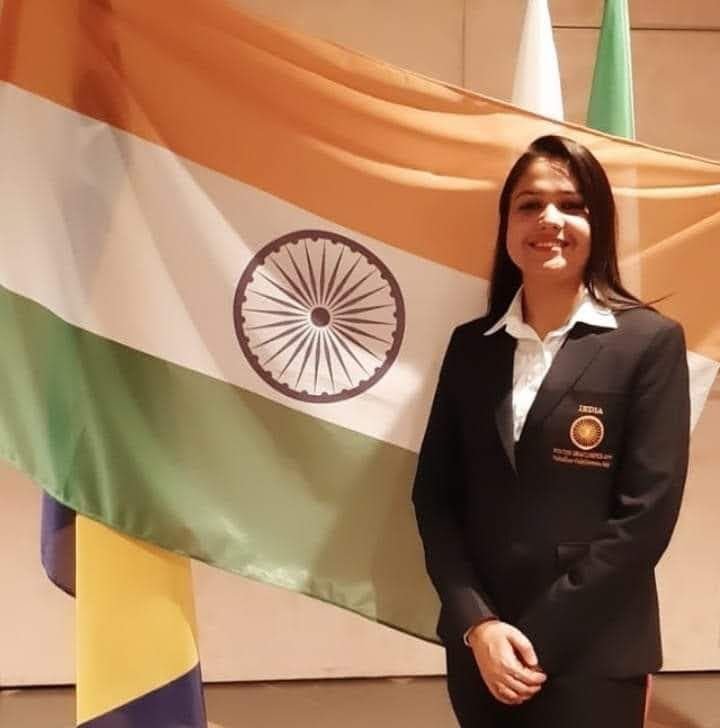
Malika Handa comes from the town of Jalandhar in Punjab. She is a speech and hearing impaired girl who’s a champion in the world of chess. She was not born deaf but lost her ability to speak and hear when she was one year old. She was introduced to the game of chess by her father when he bought her a chessboard at home. She started playing chess at the age of 11 and quickly gained interest.
Her mastery of chess also helped her to secure a seat in a mainstream college. Though she was a woman with exceptional talent, she did not receive adequate support and facilities from the government. She won the National Chess Championship for Deaf held in Mysuru.
She bagged the silver medal in the World Deaf Blitz Chess Championship held in Manchester and also won a silver medal at the Asian Championship in Chess in the year 2017. She has been the National Champion 7 times. Being a deaf Indian professional chess player; she is the first Indian woman to win a gold medal in the International Deaf and Dumb Chess Championship.
She is a true example of women-empowerment. She is India’s most prodigious chess champion. With her tally of many national and international medals, her success story makes everyone feel immensely proud and contributes to the Women-empowerment in India initiative.
Malika Handa – Love for Chess and Struggles
Soon after she had started playing chess, she developed a passion for it and outplayed her peers. She also developed an aptitude for it while playing with her father and cousin brother. The road to success was full of difficulties and hardships.
Malika won the gold medal in the national championship in Madhya Pradesh in 2013 and got the chance to go to Germany. But she couldn’t make it because the Sports Authority of India did not allow her because of some dispute with the international body. She underwent trials in Indore and won first place and got an entry into the international tournament.
Malika Handa’s Success Story
Malika has won several national and international medals. She also won the National Chess Championship for Deaf held in Mysuru. She bagged the silver medal in the World Deaf Blitz Chess Championship held in Manchester. Malika also won a silver medal at the Asian Championship in Chess in the year 2017. She has been the National Champion 7 times. Her success story makes us feel immensely proud. Malika’s story teaches how true love for the sport and pure dedication can take us places. She has yet proved that women-empowerment can lead to progress in society and women-empowerment can lead to progress of the nation.
Read the entire story of women-empowerment, Malika Handa – An inspiring story of a hearing-impaired world chess champion
To know more about women-empowerment, please check – Instagram, Twitter, and Facebook.
2. Mallika Dutt

She founded the human rights organization Breakthrough India in the year 2000 and since then, she has been working towards women-empowerment in India through education and breaking cultural norms.
The mission of Breakthrough India is to transform social norms and the cultures that promote discriminatory practices against women. Breakthrough India works to empower young girls and women through education and completely end sexual harassment and gender-based sex selection. Additionally, they work on saving girls from child marriages and domestic violence.
The organization was founded with an album and music video on women’s rights. The aim was to utilize the influence of pop culture and media for social justice and create awareness, and awareness is what leads to women-empowerment.
Challenges Faced By The Organization
The real challenge for the organization was to make women understand the concept of discrimination and violence. Many women don’t see their husband’s bad behavior and beatings as violence. Many women feel that if their husbands beat them for things like burning a roti then such behavior is normal. It becomes tough to help women when they do not realize they have issues.
The album became a hit and won the 2001 National Screen Award in India for Best Music Video. The initial campaign of Breakthrough India was ‘Bell Bajao!’ which had a series of TV advertisements to make people understand the importance of interference to help out the victims of domestic violence.
Another digital initiative by Breakthrough India is to make young boys understand that harassment is not acceptable by sharing sensitive personal stories of sexual harassment by women in their lives. Breakthrough India is working hard to break stereotypes, change the cultural practice and educate the community on the rights and equal treatment of women. Her spell-bounding work has made her named twice on Verve’s Top 50 most influential women and a brand ambassador of Women-empowerment in India.
To read more about Mallika Dutt, visit Breakthrough India Working Towards Women Empowerment Through Education And Breaking Cultural Norms
To know more about Breakthrough India, please check – Website, Facebook, Instagram, LinkedIn, and Twitter.
3. Nirmal Chandel

One of the factors affecting a low number of women-empowerment in Indian stories is the social structure. Nirmal Chandel lives in Himachal Pradesh. She got married at a very early age. In 1989, her husband died of a sudden heart attack. She was widowed at the age of 23. She was forced to live in a dimly lit room without even a fan for a year. Like many widows, she was outcasted and frequently ostracised.
She was not allowed to wear bright colors, eat with the rest of the family, attend functions, or do anything that resembled a regular life after her husband died. Since her parents turned their backs on her and her in-laws regarded her as a burden, she decided to take matters into her own hands to break free from her captivity. She joined an NGO called Social Upliftment Through Rural Action (SUTRA), where she was trained and worked as an accountant for Rs 350 per month.
Nirmal has impacted the lives of over 16,000 widowed, single, and divorced women due to her fight for her rights and freedom. She founded the Ekal Nari Shakti Sangathan (ENSS) in 2005 to lead the upheaval battle and effect policy changes. Though she was only a metric pass, during her job at SUTRA as a secretarial assistant. She learned about auditing, tallying, and accounting.
When she was working hard to become independent, her parents felt embarrassed and ordered her to quit her job in exchange for Rs 500 monthly allowance. Nirmal chose the difficult path and refused the money because she did not wish to compromise her independence due to financial requirements.
She had never seen a cheque or a computer before, and she had no idea how many zeroes there were in lakhs. She was, nonetheless, eager to learn. So she learned the ropes of auditing, tallying, accounting, and the next 15 years.
“For the first time in my life, I was permitted to make mistakes. People were curious about me. My contributions and work were quite important. Because we live in a tiny village, knowledge of my work quickly spread. I was shunned, and others used every opportunity to humiliate me. But I did not care what somebody imagined because I was working and living at the Sutra shelter. Several widows approached me around this time to discuss their concerns. Their circumstances were even worse than mine. The Single widow’s children were left hungry. Nirmal says, “I genuinely wanted to help them.”
To help other women to create their own identities, she started a WhatsApp group to post job openings and she claims that more than 150 women have been able to find work. Nirmal stood her ground firm and made her mark, she is yet another example from a small town of women-empowerment in India.
To read more about women-empowerment click, She Helped 16000 Women Like Her Find Income & Freedom: Nirmal Chandel
4. Asha Kandara
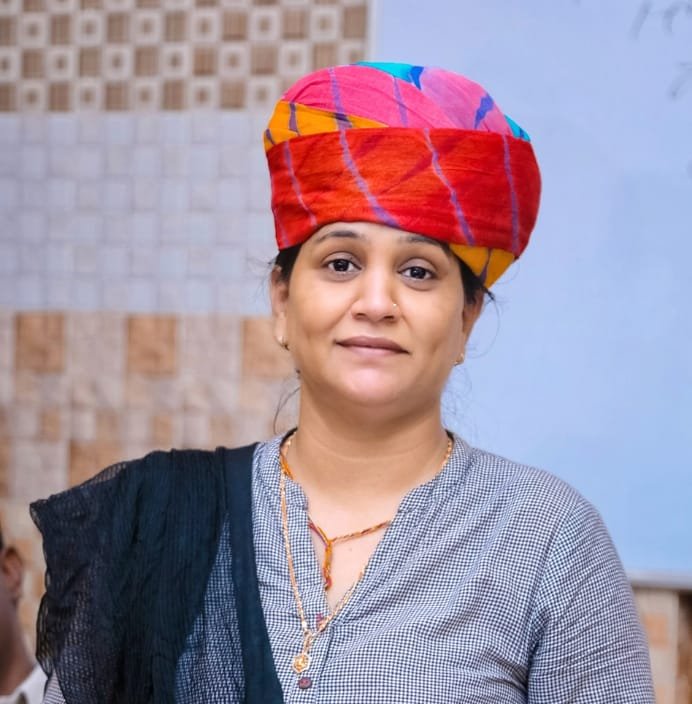
Asha is a 40-year-old mother of two kids. She used to sweep the streets of Jodhpur under the Municipal Corporation. After a few years of getting separated from her husband, she lived with her father, who also worked at the Municipal Corporation.
At the same time, she completed her education while shouldering the responsibility of her two kids. She appeared for the exam of sweeper in the Municipal Corporation and passed it. Along with her duty and the responsibility of her family, she started preparing for the civil service exam of Rajasthan Administrative Services (RAS).
In 2018, she appeared for the preliminary exam, which she passed with flying colors, encouraging her to move forward. When she finally cleared the civil service exam of the Rajasthan Administrative Service (RAS), congratulatory and praises were coming from all corners.
Being a 40 years old mother, Asha struggled a lot in life to be financially independent and make an identity of herself. When she cleared the RAS civil service exam, her happiness knew no bounds. Asha knew she had achieved the dream and would work towards bringing justice and change to society.
She cleared the Rajasthan Administrative Civil Service Exam and became the Deputy Collector of the state. From sweeping streets at Jodhpur to becoming a Rajasthan government official, she proved that grit and compassion can help anyone in fulfilling their dreams. She has proved that even in the later stage of life, no barriers can stop a woman from achieving her dreams to make her future better.
Being a single mother of two kids, she had to sustain her family. Asha did not lose hope or the dream to work beside top-most civil officials. Her dreams and willpower made her where she is today.
Amidst these, she got her support from her family members, who stood by her side every step of the way. She completed her graduation to prepare herself for the civil service exam with the support of her family. They showed the same resilience for her.
They didn’t listen to the prejudice of the society and gave her full support in her journey of becoming a Deputy Collector in Rajasthan.
Asha Kandara is an inspiration for many women, a true example of women-empowerment and people that at even the latter stage of life, you still have it in yourself to prove yourself for a better future. She believed in herself and fulfilled her dream of becoming a civil officer. Age doesn’t matter when you have the willpower to fulfill your dreams. She believed in women-empowerment from a very young age and dedicated herself in becoming a true example of it.
Asha Kandara went from being a sweeper in Jodhpur Municipal Corporation to becoming a Deputy Collector by clearing the civil service exam of Rajasthan Administrative Service.
Tap to read more about women-empowerment, Asha Kandara 40, who clears Rajasthan Administrative Civil Service Exams
Follow Asha Kandara on Facebook for more insight into Women-empowerment in India
5. Bala Devi
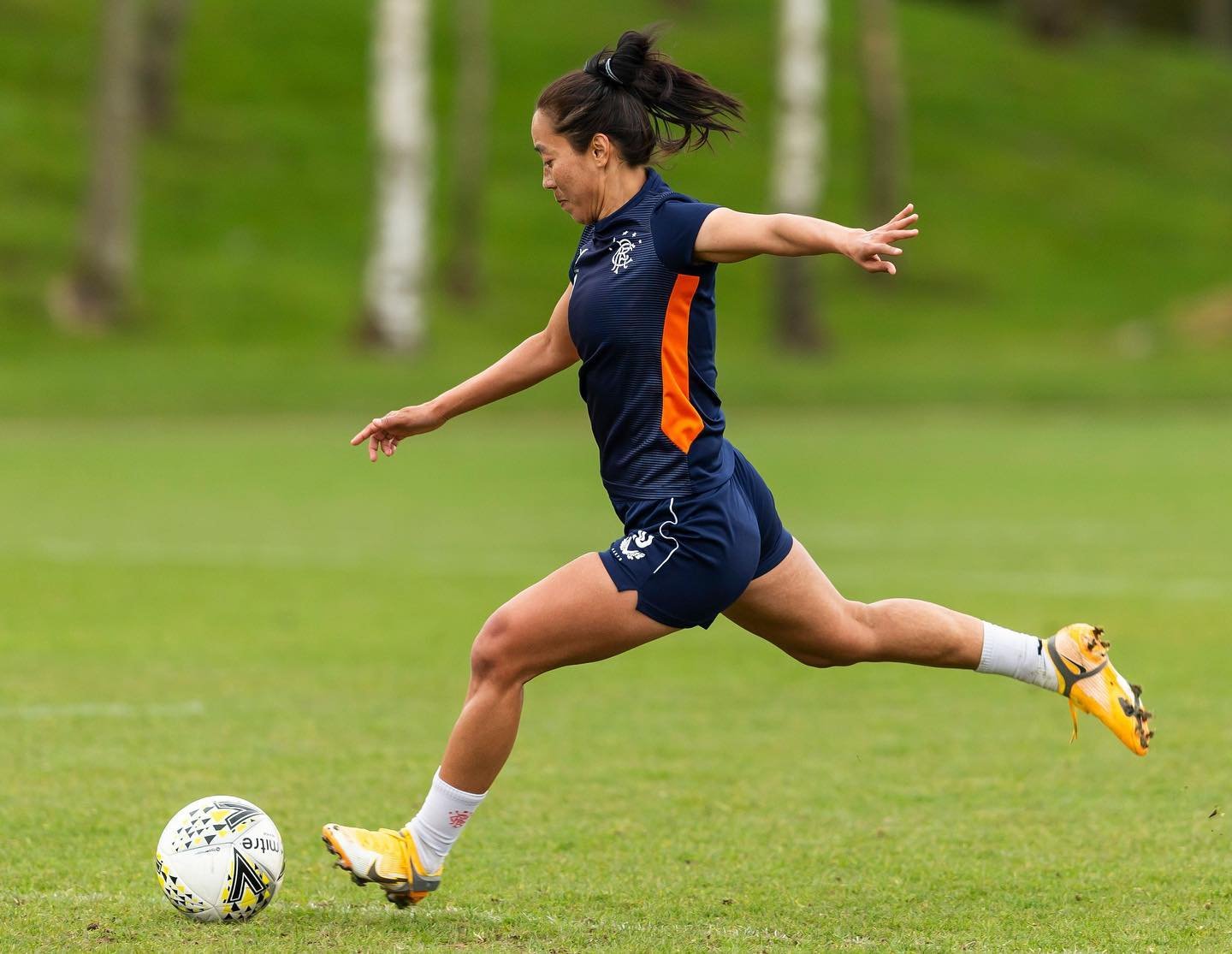
Being an Indian football fan has been tough for so many years. India has been slipping in the Fifa rankings, there isn’t a hero that we look up to and all we do is follow a foreign football club and try to enlist our emotions to them. Well, it’s a thing of the past, not just the ranking but Indian footballers and their names are marking their way to glory. This time it’s not Baichung Bhutia or Sunil Chetri, the Indian footballer is Bala Devi.
From Irengbam, a town 22 miles from Imphal, to the Scottish capital Glasgow. The Manipuri striker has made history by becoming the first Indian footballer to secure a professional contract with a foreign club. If this news gulped you into joy and happiness Bala Devi also scored in the 85th minute to open her account at Rangers FC in a 9-0 win over Motherwell in the league.
The Journey of an Indian Footballer
Bala Devi was born and raised in the northeastern province of Manipur where football is popular and played with enthusiasm. The state women’s team has won 20 of the 25 national championships held since 1991. She started playing sports at a young age because it runs in the family. Devi also played tennis and handball.
Ngangom Bala Devi holds the national women’s soccer flag as the highest scorer and former captain of the Indian national team. Bala Devi was 15 when she started playing for India. She was inspired to play football because of her father, who often played as a hobby.
As a teenager, She admired Brazilian stars such as Ronaldo and Ronaldinho. Well her current favorites are Midfielder and captain of the American women’s national team, Megan Rapinoe, and among the men, Portugal midfielder Cristiano Ronaldo.
Not far from home, she made an idol in Oinam Bembem Devi, a Manipur female soccer player, known as the “Durga of Indian football” – referring to the fearless Hindu goddess.
In 2002, to the delight of Bala Devi, she had the opportunity to play alongside Bembem Devi in national games. After a series of consistent performances, in 2005, she joined the Indian national under-17 team. Bala was just 15 years old then.
Manipur to Scotland
Her success in Indian football earned her a job with the Manipur police in 2010. She has represented three different clubs in the Indian Women’s League, including two seasons at Manipur Police Sports Club.
However, there was another part of the transfer. Due to FIFA’s rule of the Indian women’s soccer team outside the rank of 40, she did not automatically meet the eligibility requirements to play in the United Kingdom. Qualification rules state that a player’s country must be ranked in the top 40 and must play 75 percent or more of the national team’s games in the last two years. She did not achieve these goals.
Fortunately, the six-member team of the Scottish Football Association (SFA) granted Bala the UK permit with exceptional freedom after Rangers FC presented its case to members of the Indian football team including AIFF president Praful Patel, coach of the Indian women’s group. Maymol Rocky, Bembem Devi, Bhaichung Bhutia, Renedy Singh, and current Indian football team captain Sunil Chhetri who has written letters of recommendation.
After all the paperwork was ready, the transfer was completed on January 29th.
Achievements of Bala Devi
Before she arrived in Scotland, Bala Devi came to prominence in 2019, when she scored 26 goals in seven games for Manipur Police in the Indian Women’s League (IWL). A top player in the Indian women’s national team, she has won three SAFF Championship trophies (2010, 2014, and 2016). She has previously served as captain of the Indian football team.
She also received the AIFF Women’s Player of the Year award in 2014 and 2015.
Bala, 31, suffered an ACL (anterior cruciate ligament) injury while playing with Rangers FC and underwent surgery on September 3. Mad4India wishes her a speedy recovery and all the best in her comeback matches.
She is the best striker player in the country and her stats stand at 52 goals in 58 games between 2010 and 2019 when she last represented the country.
She also scored two goals in India’s 2-0 win over Nepal in the final of the South Asian Games, which was the last time she represented the Bharat army.
To Know more about Bala Devi, follow her on Instagram, Twitter
Tap to read more about women-empowerment, Journey Of Indian Football Player Bala Devi Is An Inspiration For Every Football Fan And Player
6. Seema Rao
Dr. Seema Rao, is India’s first combat trainer and has spent more than 2 decades training soldiers that too without compensation. Today Mad4India gives the credits where it’s due and salutes Dr. Seema Rao who is India’s first woman commando trainer.
India’s Wonder Woman
There are people that are good at something but then there comes a few who excel at everything they lay their foot in. Dr. Seema Rao falls under the last.
The passion for the country was engraved in Seema Rao through the legacy of her father. Ramakant Sinari who himself was a freedom fighter led a movement to free Goa from the reigns of the Portuguese.
An episode of sexual harassment on a public street in her late teens changed the course of Seema Rao’s life. She decided to strengthen and learn to defend herself with martial arts. She went on to win a black belt in Taekwondo and Krav Maga, as well as an 8th-degree black belt in martial arts. She is also the world’s highest qualified female trainer in Bruce Lee’s Jeet Kune Do.
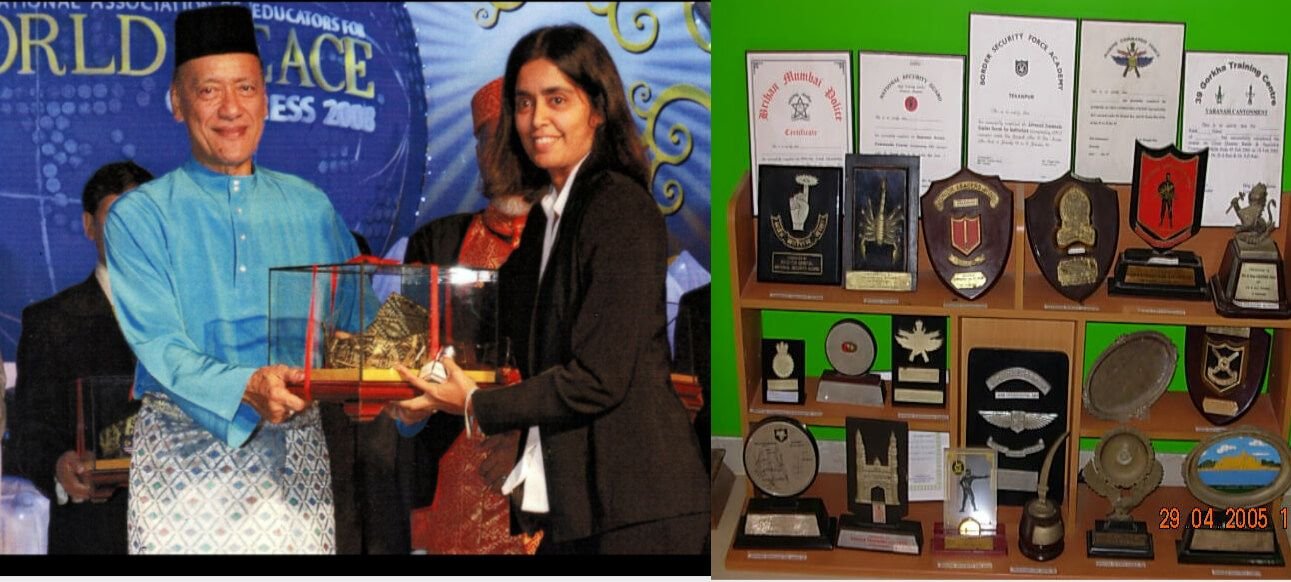
Life of Seema Rao
Seema hailed from Mumbai and was very fearful as well as timid in life as a girl. Although she was a weak child and was afraid of almost everything, Seema decided to deal with her fears.
To overcome her fear of heights, he studied mountaineering at the Himalayan Mountaineering Institute and won a silver medal. To overcome the fear of water, she completed the SCUBA Deep Sea Diving Course from PADI, USA. He overcame his fear of Fire by becoming a FireFighter. Rao overcame her fear of living alone by studying Jungle Survival.
She was married off at the age of 18 but this is where Seema’s story as a fighter efflorescence. Seema’s better half and a very special man Major Deepak Rao encouraged her to complete her martial arts and combat training.
Not just that, he also pushed her to study alternative medicine, leadership from international universities, jungle survival, scuba diving, and a lot more. Seema Rao bestows Deepak as the source of her success and achievements.
A True Love Story

The couple had to deal with a lot of financial hardship in the early years of their marriage but they stuck to their decision not to charge a single rupee for their work. Also, as Seema often went to hostile places, bad weather, and chronic situations, she could not even attend her father’s funeral. Realizing that it would not be possible for her to conceive, in view of her strict training program, Seema decided not to have her own baby but to adopt a girl.
During the operation, Seema also suffered multiple injuries, including a broken spine and severe head injuries that left her unable to remember for months, she could not see anyone but her husband. He was also shot by rebels and needed eye surgery. This is when Seema Rao decided to sell her Mangalsutra. All these hardships tried to pull the couple down but their determination to serve his nation did not waver.
“Yes She Can”
Dr. Seema received the Nari Shakti Award from the President of India for being the first and only Women Commando Coach in India.
She has trained commandos from all elite forces including special forces, the NSG Black Cats, the IAF’s Garud Commando Force, the Navy-Marine Commandos, and many others. She and her husband Dr. Deepak Rao received three Army Chief excerpts for their work in the close-quarter battle (CQB).
Seema Rao is one of the rarest people in the world to excel in Jeet Kune Do – a form of martial arts founded by legendary Bruce Lee.
She has co-authored several books and has produced and acted in India’s first film Mixed Martial Art (MMA), Hathapayi, which is also the first Indian film to showcase the martial arts of Jeet Kune Do.
To Know more about Seema Rao, Visit her Instagram, Website, and LinkedIn
Tap to read a detailed story about women-empowerment – She Has Trained More Than 20,000 Soldiers, Meet Dr. Seema Rao – India’s First And Only Commando Trainer
7. Ritu Karidhal
Chandrayaan 2 Mission Director Ritu Karidhal’s journey from a middle-class homemaker in the northern Indian city of Lucknow to being promoted as director of India’s Moon Mission in 2019 is no less than a stimulant.
This is the story of an AeroSpace engineer who aimed for stars to make the nation reach Mars and the moon.
Early Life of Ritu Karidhal
Ritu is the oldest of 4 children in her family, born into a middle-class family of Lucknow in Uttar Pradesh, India. Although the family lacked the resources for additional training and teaching classes, her parents put great emphasis on education.
Ritu was a hardworking achiever in her studies, and her mother accompanied her many nights during her study so that she would not feel alone and lose her motivation. Not only did her mother stay up late at night with her daughter’s studies, but also saw the same dreams as Ritu did, as she stared at the star and thought about the night sky.
As a teenager, one of Ritu’s hobbies was collecting newspaper clippings that kept track of space-related activities and news from the National Aeronautics and Space Administration (NASA) and Indian Space Research Organisation ISRO.
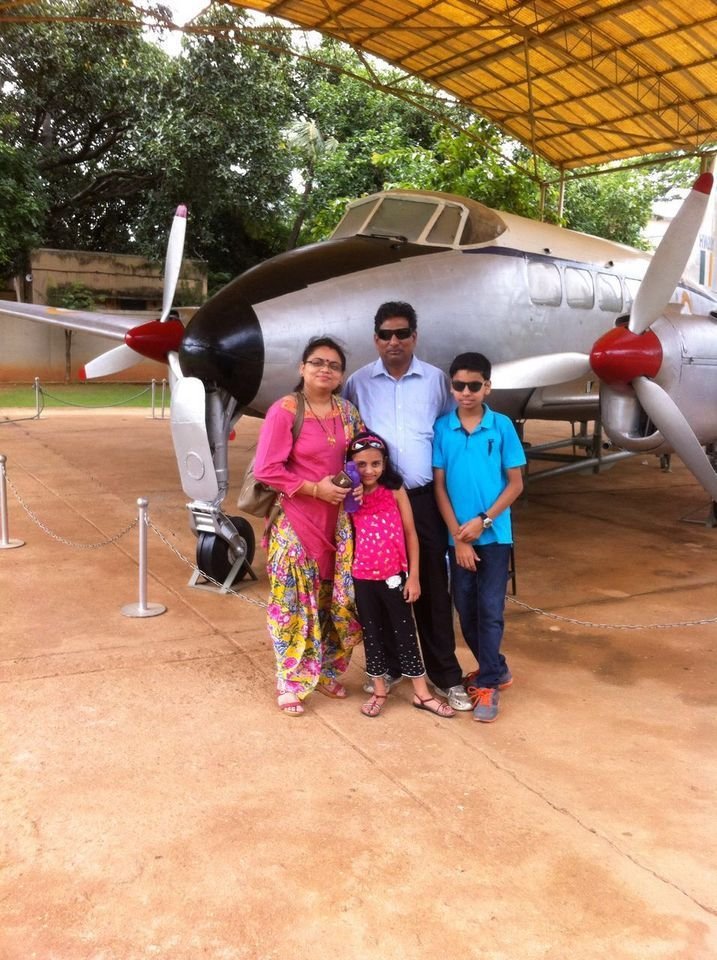
Education of Ritu Karidhal
Ritu was always fascinated by the stars, and had a real love of mathematics and physics – so much so that she claims to have written poems about mathematics!
Ritu Karidhal completed his BSc at Mahila Vidyalaya PG College and Master of Science at the Physics University of Lucknow.
Ritu often praised her professors for teaching physics in such a fascinating way that she believed she had chosen the right path. After completing the Master of Science degree, Ritu began to study for Ph.D. in physics under Professor Manisha Gupta, who was also her Master of Science administrator.
Ritu Karidhal As ISRO Scientist
Ritu Karidhal has worked for ISRO since 1997.
Mangalyaan is one of the major achievements of ISRO. It makes India the fourth country in the world to reach Mars. Done within 18 months and at a very low cost to taxpayers – only Rs. 450 crores. Her job was to think about and implement an advanced independent manual system, which used satellite functions independently in space and responded appropriately to malfunctions.
When the United Kingdom took over the G7 presidency in 2021, Karidhal was appointed by Women and Equality Minister Liz Truss to the newly formed Gender Equality Council (GEAC) led by Sarah Sands.
The Journey to Mars and Moon
When Ritu started at ISRO in Bangalore, she was first sent to the U.S. R. Rao Satellite Center (URSC). Despite the other senior scientists available, Ritu remembers receiving difficult and challenging projects because of her educational background. Not only did she finish the assignments on time, but it also helped her to be more confident in her work and have a greater love for the challenges ahead. Ritu loved the projects she was involved in!

The most challenging project that came over her desk was the Mars Orbiter Mission (M.O.M) of India, called Mangalyaan-1. In 2012, Ritu was appointed Deputy Director of Operations for the campaign: a campaign that demanded a short-term completion, and if completed India would be the first to achieve given the economics.
Ritu Karidhal led a team that created a software system designed to make decisions on its own. Together with a team of scientists, as well as electrical and mechanical engineers, an independent system was created with a 10-month record!
The project was completed in just 18 months.
Mangalyaan-1 was launched on 5th November 2013 and has been successfully orbiting Mars since 24th September 2014. It was the first time any country had reached Mars orbit in its first attempt. The image of celebrating the handful of women scientists who have worked on this campaign was being shared around the world!
Ritu, along with many other women in the group at ISRO, received the title “Rocket Women of India”.
The Chandrayaan 2 is said to be a major challenge so far as it will attempt to explore the area, which is, the untested area of the lunar south pole region. The campaign aims to gather information about minerals, rock formations, and water on the moon.
The lunar south pole is said to be of great importance to the scientific community as there may be water in permanent shady areas near it. Also, the Lunar south pole region has cold trap traps and contains records of the remains of the original Solar System.
The entire project cost around Rs 1,000 crore and includes a lander, rover, and satellite built under ISRO guidance.
All of India applauded as the rocket carrying the country’s first moon lander and explorer embarked on a 23-day orbit around the globe. Politicians spoke in groups, bloggers praised the event while millions of Indians tweeted cheerfully and proudly that their country was aiming for the moon.
The introduction of Chandrayaan-2 is rightly regarded as the sum of two achievements – the success of the space system and the gradual rise from women’s participation to their achievements. However, there are still only 20% women scientists working in ISRO but as said the number is gradually increasing for good. Mad4India salutes the dedication and hard work showcased by Ritu Karidhal.
If You loved reading about the entire Women-empowerment story of Ritu Karidhal, read about 7 Famous Indian Scientists who made noteworthy contributions to the world
To know more about Ritu Karidhal, Follow her on Facebook.
Tap to read more about The Mahila Behind Mangalyaan and 1000 Cr Rocket to the Moon – Ritu Karidhal
8. Harpreet Chandi
A British-Indian Sikh woman who serves in Army, Captain Harpreet Chandi has become the first woman of Indian Origin who completed an unsupported solo journey to the South Pole in 45 days. A big blaze to another inspiration when ever we talk about steering up Mt Everest, Bachendri Pal – The First Indian Woman To Scale The Mt. Everest
Antarctica is the highest, coldest and windiest continent on earth. No one can think of living there permanently. Few people have made successful expeditions to the South Pole. Norway’s Liv Arnesen was the first woman in the world who embarked on a solo journey to the South Pole in the year 1994. The year 2022 saw the first woman of color complete her solo trek to the South Pole. The journey which started in the month of November got completed in merely 40 days. Harpreet Chandi reached the South Pole on 3 January.
Life before The South Pole
Harpreet Chandi who comes from Derby joined the Army Reserves at the early age of 19. After serving for 6 years, she joined the regular Army at age of 25. She was a part of a Medical Regiment in the northwest of England, her primary role was to organize and validate the training for medics in the Army as Clinical Training Officer. As an Army officer, she has completed large-scale deployments in Kenya and Nepal.
Currently, she is based in London. She is completing her master’s degree from Queen Mary’s University in Sports and Exercise Medicine.
She is an endurance athlete and has run many marathons and ultra-marathons in her life.
Preparing for the journey
She spent two and a half years preparing for her expedition to the South Pole.
Since she never camped in her life, she began her crevasse training in the French Alps. She also trekked across Langjökull Glacier in Iceland and prepared by spending 27 days on the ice cap in Greenland.
Back at home, she trained herself by dragging a heavy tire behind her bag to practice pulling a heavy sled.
Journey to The South Pole
She has always been keen to push the human body to its limits. She embarked on her long journey to Antarctica in the month of November 2021. According to reports, after flying to Chile, the solo trek started from Antarctica’s Hercules Inlet. During the trek, she had to carry a small sled of around 90 kilograms carrying food and fuel for 40 days.
Reportedly, the solo trek was unsupported and her only contact with the outside world was daily check-ins with her support team.
She had to battle minus 50 degrees Celsius temperatures and the wind flowing at 60mph while preserving her way through illness and isolation. Some days she faced a ‘whiteout’ as she did not anyone for days.
She skied for up to 11 hours per day, putting up a tent at night. She melted snow to drink and cooked freeze-dried meals she carried.

She finally completed her 700 miles (1126km) journey on 3 January 2022.
Praises from around the world
The Chief of the General Staff of the British Army praised Ms. Chandi calling her an “inspirational example of grit and determination”. UK defense secretary Ben Wallance also congratulated Chandi on her remarkable achievement.
What’s in store for future
Harpreet Chandi plans to set up an “adventure grant” to support women in pushing their boundaries by any unique adventure. The fund will use the money raised by Chandi for her polar trip through Go Fund Me appeal.
To know more about Harpreet Chandi, please check – Instagram
If you like this story about women-empowerment, read the story about Shekar Goud – An inspiring story of India’s first triple amputee to climb Mount Elbrus, the highest peak in Russia
Tap to read more about First Indian–origin Woman To Complete Solo Trek To The South Pole, Meet The Braveheart Captain Harpreet Chandi
9. Arunima Sinha
Fear is a reaction and Courage is a decision. Lying down fighting for life and death. Arunima Sinha could have easily given up on life and the system that crippled her. But she decided to fight for herself, a bunch of people can only cripple you physically but there holds only one person that can paralyze you as an individual. Your own mindset.
Arunima Sinha born in the city of Ambedkar Nagar Lucknow has achieved so much that an average individual will find it hard to believe. Mad4india brings in the story and passion of Arunima Sinha whose story clenches the power of making you do the impossible.

The Accident that Changed Everything
Arunima Sinha is the first amputee to climb Mount Everest. But before attaining that there’s a story that gave her the calling to thrive at the highest peaks of the world. Arunima was thrown off a train running in 2011 by thieves while she was going to give her CISF examination. While resisting the robbery and refusing to give them a gold chain, she got targeted by the thieves and as a fallout, one of her legs had to be amputated below the knee.
All night long Arunima Sinha, who had her leg cut off, screamed in pain. She continued to fight for her life in the hospital for four months. After receiving an artificial limb, she decided to overcome it with double force.
” You We Can “
Motivated by yet another inspiring story of Yuvraj Singh and his battle with cancer. She decided to fight it out like a boss. She didn’t want the job provided as compensation to her. She wanted to live life to the fullest and not in pity.
She joined the Eco Everest Expedition team at a training camp run by the Tata Steel Adventure Foundation in Uttarkashi and trained under mountaineer Bachendri Pal. During her year-long mental and physical training, she sometimes felt discouraged when she could not meet “normal” people, but her strong commitment kept Arunima Sinha going.
” The Everest Trek “
In less than two years, Arunima Sinha was ready to climb the highest mountain peak.
Despite the decline in air supply and ongoing warnings from the Sherpa, Arunima decided to wait at a high place for a few minutes to quickly record a video of her success
Most hikes are done at night when the weather is calm. When Arunima came out of the South camp that night, wherever her light pointed, she could only see corpses. But she went up.
” Arunima Sinha and The Indian National Flag ”
When she was too close to the finishing line, she got a big jolt from her Sherpa.
When she returned to the base, she was completely out of breath and fell to the ground. With a sigh, she somehow told his Sherpa, “If I don’t survive today, please make sure my video reaches India so that my victory encourages everyone who thinks of quitting.”
A British mountaineer who decided to return home without having to climb a mountain that day had thrown away an additional air cylinder. Sherpa Kancha quickly picked up the cylinder and that saved Arunima’s life.

On May 21, 2013, at 10.55 am, Arunima made history. She hoisted the national flag at Mt Everest, becoming the first woman in the world to have her limb amputated to reach the highest point in the world. It took her 52 days to reach the summit.
After climbing Everest, she set herself the goal of climbing the highest peaks in all seven continents of the world. In total, she has already made 7 peaks over time:
1. Everest in Asia, 2. Kilimanjaro in Africa, 3. Elbrus in Europe, 4. Kosciuszko, Australia and 5. Aconcagua in Argentina has the top five peaks in the world, Carstensz Pyramid (Puncak Jaya) in Indonesia. She completed her final summit of Mount Vinson in Antarctica on 1 January 2019.
Arunima Sinha has been awarded Padma Shri which is the 4th highest civilian award in the country. She has also jotted down her life in the book ‘Born again on the Mountain”.
Mad4India congratulates Arunima Sinha on her feat and inspiring millions of people all around the world.
To Know more about Arunima Sinha, follow her on Instagram, Facebook, and Linkedin.
If you loved reading about women-empowerment, know more about Shekar Goud – An inspiring story of India’s first triple amputee to climb Mount Elbrus, the highest peak in Russia
Tap to read more about Arunima Sinha – Arunima Sinha Conquered The Highest Peak In The World Mount Everest With An Artificial Leg
10. Nisha Grewal
IAS Nisha Grewal secured the AIR 51 in UPSC 2020 in her first attempt at the young age of 23.
Many people dream of becoming an IAS officer but very few are able to make this dream come true. due to the repeated failure and multiple attempts, many aspirants leave the race in between. This prestigious exam demands years and years of studying and practice and only a handful can bear repeated failure and have patience. There are only one in a million who could crack the exam in the first attempt and among those very few belong to Nisha Grewal.
She hails from a small village in Haryana and though there was lack of resources, she proved herself and became an Indian Administrative Service officer at the age of 23.
Early life
Nisha Grewal is from Bamla Village in Bhiwani, Haryana. She completed her schooling at Bhiwani Public School.
Nisha Grewal’s father, Surender Grewal, works in the electricity department and her mother Promila Grewal is a housewife. Her grandfather Ramphal Grewal is a retired Maths teacher. After completing her schooling at Bhiwani, she came to Delhi to pursue BA Hons. in Political Science from Delhi University.
The inspiration behind clearing UPSC
The credit for her success goes to Nisha’s grandfather who was instrumental in her preparation and helped her throughout her journey. He not just motivated her but also helped her in preparation for the UPSC exam. She also had constant support from her parents as her family cheered up during a hard time.
While pursuing her BA Hons. degree in Political Science from Delhi University’s Miranda House, in the final year of college, she started coaching in Delhi.
Nisha Grewal went to coaching for ten months only as the COVID-19 situation made her move back to her native home in Bhiwani. She did not lose hope but started the preparation of the Civil Service examination on her own. She used to study for about 8 to 9 hours every day. If someone is facing difficulty during the preparation, they can take the help from coaching but if someone wishes to prepare on their own then all the notes and resources are available online. Nisha relied on NCERT books and some standard books for her preparation.
As she started studying during the pandemic at her home, her grandfather was her mentor 24/7 and she also took constant advice from District Commissioner Jaibir Singh which really proved helpful in her preparation.
Created history with AIR 51 in UPSC
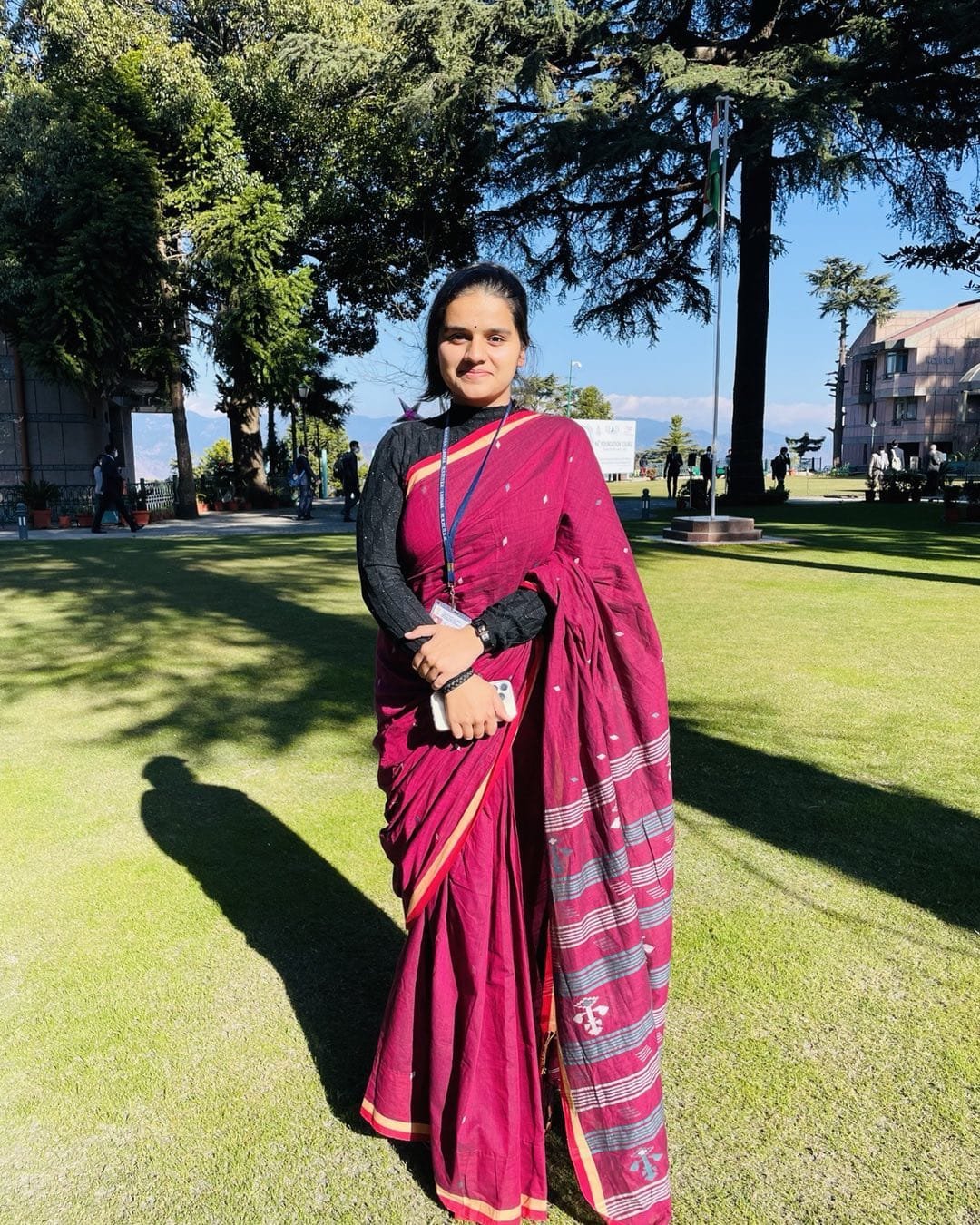
IAS officer gave the Union Public Service Commission examination in 2020 and cracked the exam in her first attempt.
She chose Political Science as her optional subject. The reason behind choosing Political Science as her optional subject is that she was freshly graduated with a degree in Political Science and all the basics were very clear.
Nisha Grewal’s total score was 997 marks which bifurcated in 818 marks for the written test and 179 marks for the personality test.
She faced a lot of obstacles in her journey but she never let them demotivate her. Hard work along with the right strategy made her successful in this difficult journey.
Nisha Grewal brought home the glory in her first attempt and became an IAS officer at the age of 23.
If you loved this story about women-empowerment, read another inspiring story about Sanitation worker, Asha Kandara 40, clears Rajasthan Administrative Civil Service Exams
To know more about Nisha Grewal, please check – Instagram and Facebook.
Tap to read more about – IAS At 23, Nisha Grewal Cracked The Prestigious UPSC Exam, Says Her Grandfather Was The Key
Women-empowerment comes when we as a society understand the true value of a woman. Women-empowerment can be traced back to early eras and it is still continuing to flourish. Starting from the times when inhumane activities with women were accepted by society or when small girls in the community were married at a very young age, Women-empowerment took birth in those times. There are some examples of women-empowerment in the early eras like Rani Lakshmi Bai, Marie Curie, Indira Gandhi, Oprah Winfrey, and many more.
In the 21st century, social media is the biggest tool that can be used effectively to turn these sparks into fire and tell the world that ‘She Is Ready To Take The World’. From every nook and corner of the world, the echoes of women-empowerment are getting louder and louder. Even in the nation’s biggest panchayat, the Lok Sabha, women-empowerment has become the main motto. There are a record 78 female members of parliament in 2020 and the number is only going to increase.
If you loved reading these stories about women-empowerment, read 10 Indian Sportswomen who made the nation proud in 2021
You can also bookmark our website for faster access to Inspirational stories, good news, happy news, and positive stories about unsung heroes from better India. Share your inspiration with us on Facebook or LinkedIn.
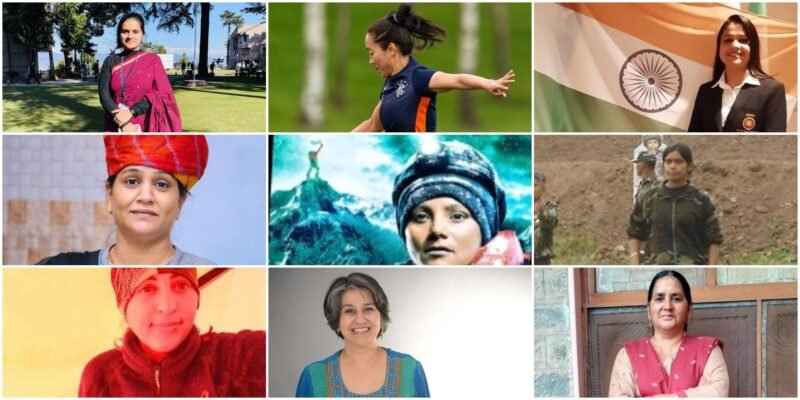
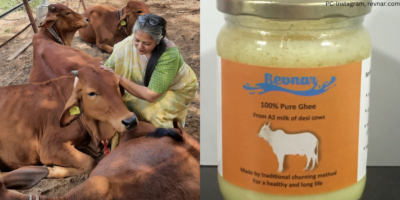
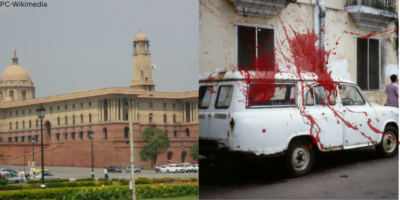

This blog post not only educated me about [topic] but also made me reflect on the broader implications. It’s thought-provoking and has sparked conversations among my peers. Well done!
For the reason that the admin of this site is working, no uncertainty very quickly it will be renowned, due to its quality contents.
I appreciate how you broke down complex concepts into digestible pieces. Your explanations were clear and concise, making it easier for me to grasp [topic]. Thank you!
The way you addressed the common misconceptions about [topic] in this post was enlightening. I appreciate how you debunked myths and provided accurate information. Well done!
Your passion for [topic] is contagious! This post inspired me to dig deeper into the subject and expand my knowledge. Thank you for fueling my curiosity!
I’ve bookmarked your blog because your content consistently provides value. This post is no exception – it’s informative, engaging, and thought-provoking. Looking forward to future posts!
Your expertise in [topic] shines through in this post. The depth of your knowledge and your ability to articulate complex ideas in a reader-friendly way is admirable. Thank you for sharing your wisdom!